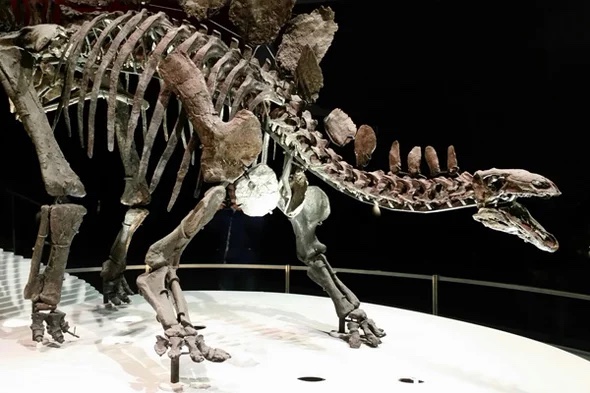Paleontologists had a problem determining what sex a Stegosaurus was until now. The Stegosaurus had no problem telling whether a potential mate was a male or a female because the size and shape of the twin rows of bony plates on the animal’s spines were one of the most ancient forms of “sexting” ever known. The discovery of the flagrant sexual display in Stegosaurus was reported in the edition of the journal Public Library of Science by Evan Saitta from University of Bristol in Britain.
Saitta examined the fossils of all known Stegosaurus and an especially large find of Stegosaurus in Montana. He found that the bony plates that occupied two rows on the animal’s backs had two distinctly different sizes and shapes. Previously, scientists had considered the different sized back plates to be an indication of differences in species but the new study shows they are an indication of the sex of the animal. Some other researchers thought the difference in plate size and shape was the result of age. The plates also served as protection from predators.
The larger and wider plates indicated that the animal was a male. The taller and thinner back plates indicated the animal was a female. Saitta proposes that the difference was the result of a propensity for sexual display that favors males in most species of animals. This is the first proof of sexual dimorphism in Stegosaurus. The plates may have been different colored for males and females but that cannot be determined directly from the fossils.
Stegosaurus was a large animal that lived in North America between 150 million years ago and 155 million years ago. The animals weighed 10,000 pounds and were about 30 feet in length. The Stegosaurus brain was only 2.8 ounces. The animal has an unfounded reputation for being unintelligent. The fact is no one can really say how intelligent they were. The dinosaurs were built low to the ground so perhaps the difference in bone plates on the back helped the animals to determine potential mates.















